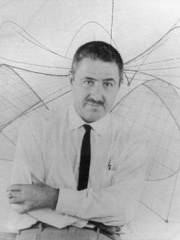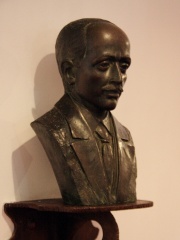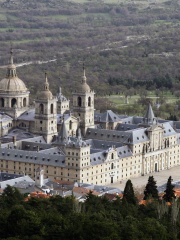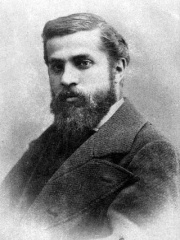
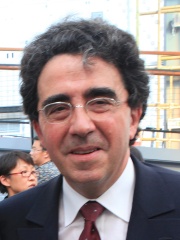

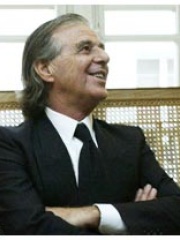
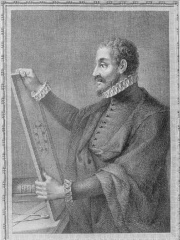
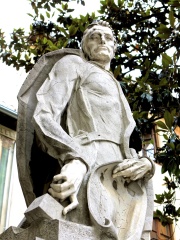
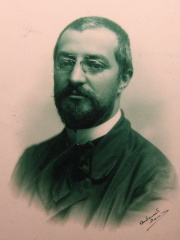
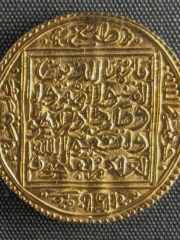
The Most Famous
ARCHITECTS from Spain
This page contains a list of the greatest Spanish Architects. The pantheon dataset contains 518 Architects, 21 of which were born in Spain. This makes Spain the birth place of the 6th most number of Architects behind France, and United States.
Top 10
The following people are considered by Pantheon to be the top 10 most legendary Spanish Architects of all time. This list of famous Spanish Architects is sorted by HPI (Historical Popularity Index), a metric that aggregates information on a biography's online popularity. Visit the rankings page to view the entire list of Spanish Architects.

1. Antoni Gaudí (1852 - 1926)
With an HPI of 86.92, Antoni Gaudí is the most famous Spanish Architect. His biography has been translated into 116 different languages on wikipedia.
Antoni Gaudí i Cornet ( gow-DEE, GOW-dee; Catalan: [ənˈtɔni ɣəwˈði]; 25 June 1852 – 10 June 1926) was a Catalan architect and designer from Spain, widely known as the greatest exponent of Catalan Modernisme. Gaudí's works have a sui generis style, with most located in Barcelona, including his main work, the Sagrada Família church. Gaudí's work was influenced by his passions in life: architecture, nature, and religion. He considered every detail of his creations and combined crafts such as ceramics, stained glass, wrought ironwork forging, and carpentry. He introduced new techniques in the treatment of materials, such as trencadís which used waste ceramic pieces. Influenced by neo-Gothic art and Oriental techniques, Gaudí became part of the Modernista movement, which peaked in the late 19th and early 20th centuries. His work eventually transcended mainstream Modernisme, developing into a unique style inspired by natural forms. Gaudí rarely drew detailed plans, preferring to create three-dimensional scale models and mold the details as he conceived them. Gaudí's work enjoys global admiration and ongoing study. His masterpiece, the still-incomplete Sagrada Família, is the most-visited monument in Spain. Between 1984 and 2005, seven of his works were declared UNESCO World Heritage Sites. Gaudí's Catholic faith intensified throughout his life, and religious imagery appears in many of his works. This earned him the nickname "God's Architect". His cause for canonization was opened in the Archdiocese of Barcelona in 2003. Pope Francis authorised Gaudi's declaration as Venerable in April 2025.

2. Santiago Calatrava (b. 1951)
With an HPI of 74.12, Santiago Calatrava is the 2nd most famous Spanish Architect. His biography has been translated into 68 different languages.
Santiago Calatrava Valls (born 28 July 1951) is a Spanish-Swiss architect, structural engineer, sculptor and painter, particularly known for his bridges supported by single leaning pylons, and his railway stations, stadiums, and museums, whose sculptural forms often resemble living organisms. His best-known works include the Olympic Sports Complex of Athens, the Milwaukee Art Museum, the Turning Torso tower in Malmö, Sweden, the World Trade Center Transportation Hub in New York City, the Auditorio de Tenerife in Santa Cruz de Tenerife, the Margaret Hunt Hill Bridge in Dallas, Texas, and his largest project, the City of Arts and Sciences and Opera House in his birthplace, Valencia. His architectural firm has offices in New York City, Doha, and Zurich.

3. Lluís Domènech i Montaner (1850 - 1923)
With an HPI of 68.70, Lluís Domènech i Montaner is the 3rd most famous Spanish Architect. His biography has been translated into 32 different languages.
Lluís Domènech i Montaner (Catalan pronunciation: [ʎuˈiz ðuˈmɛnək i muntəˈne]; 21 December 1850 – 27 December 1923) was a Catalan architect who was very much involved in and influential for the Catalan Modernisme català, the Art Nouveau/Jugendstil movement. He was also a Catalan politician. Born in Barcelona, he initially studied physics and natural sciences, but soon switched to architecture. He was registered as an architect in Barcelona in 1873. He also held a 45-year tenure as a professor and director at the Escola d'Arquitectura, Barcelona's school of architecture, and wrote extensively on architecture in essays, technical books and articles in newspapers and journals. His most famous buildings, the Hospital de Sant Pau and Palau de la Música Catalana in Barcelona, have been collectively designated as a UNESCO World Heritage Site. As an architect, 45-year professor of architecture and prolific writer on architecture, Domènech i Montaner played an important role in defining the Modernisme arquitectonic in Catalonia. This style has become internationally renowned, mainly due to the work of Antoni Gaudí. Domènech i Montaner's article "En busca d'una arquitectura nacional" (In search of a national architecture), published 1878 in the journal La Renaixença, reflected the way architects at that time sought to build structures that reflected the Catalan character. His buildings displayed a mixture between rationalism and fabulous ornamentation inspired by Spanish-Arabic architecture, and followed the curvilinear design typical of Art Nouveau. In the El castell dels 3 dragons restaurant in Barcelona (built for the World's Fair in 1888), which was for many years the Zoological Museum, he applied very advanced solutions (a visible iron structure and ceramics). He later developed this style further in other buildings, such as the Palau de la Música Catalana in Barcelona (1908), where he made extensive use of mosaic, ceramics and stained glass, the Hospital de Sant Pau in Barcelona, and the Institut Pere Mata in Reus. Domènech i Montaner's work evolved towards more open structures and lighter materials, evident in the Palau de la Música Catalana. Other architects, like Gaudí, tended to move in the opposite direction. Domènech i Montaner also played a prominent role in the Catalan autonomist movement. He was a member of the La Jove Catalunya and El Centre Català and later chaired the Lliga de Catalunya (1888) (Catalan League) and the Unió Catalanista (1892) (Catalan Union). He was one of the organisers of the commission that approved the Bases de Manresa, a list of demands for Catalan autonomy. He was a member of the Centre Nacional Català (1889) and Lliga Regionalista (1901), and was one of the four parliamentarians who won the so-called "candidature of the four presidents" in 1901. Though re-elected in 1903, he abandoned politics in 1904 to devote himself fully to archeological and architectural research. He died in Barcelona in 1923 and was buried in the Sant Gervasi Cemetery in that city.

4. Ricardo Bofill (1939 - 2022)
With an HPI of 66.83, Ricardo Bofill is the 4th most famous Spanish Architect. His biography has been translated into 32 different languages.
Ricardo Bofill Leví (Catalan: [riˈkaɾðu buˈfiʎ ləˈβi]; 5 December 1939 – 14 January 2022) was a Spanish architect from Barcelona. He founded the Taller de Arquitectura in 1963 and developed it into a leading international architectural and urban design practice. According to architectural historian Andrew Ayers, his creations rank "among the most impressive buildings of the 20th century."
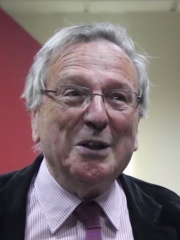
5. Rafael Moneo (b. 1937)
With an HPI of 66.65, Rafael Moneo is the 5th most famous Spanish Architect. His biography has been translated into 37 different languages.
José Rafael Moneo Vallés (born 9 May 1937) is a Spanish architect. He won the Pritzker Prize for architecture in 1996, the RIBA Royal Gold Medal in 2003, and La Biennale's Golden Lion in 2021.

6. Juan de Herrera (1530 - 1593)
With an HPI of 65.50, Juan de Herrera is the 6th most famous Spanish Architect. His biography has been translated into 36 different languages.
Juan de Herrera (1530 – 15 January 1597) was a Spanish architect, mathematician and geometrician. One of the most outstanding Spanish architects in the 16th century, Herrera represents the peak of the Renaissance in Spain. His sober style reached full development in buildings like the Monastery of San Lorenzo de El Escorial. The Herrerian style was named after him, and was representative of the architecture of the Spanish Empire of Philip II and his Austrian successors. Herrera was interested in many branches of knowledge. His Discurso sobre la figura cúbica (Discussion of the Cubic form) tells us about his notable knowledge about geometry and mathematics. He participated in the military campaigns of Charles V in Germany, Flanders and Italy.

7. Alonzo Cano (1601 - 1667)
With an HPI of 64.67, Alonzo Cano is the 7th most famous Spanish Architect. His biography has been translated into 33 different languages.
Alonso Cano Almansa or Alonzo Cano (19 March 1601 – 3 September 1667) was a Spanish painter, architect, and sculptor born in Granada.

8. Josep Puig i Cadafalch (1867 - 1956)
With an HPI of 64.32, Josep Puig i Cadafalch is the 8th most famous Spanish Architect. His biography has been translated into 26 different languages.
Josep Puig i Cadafalch (Catalan: [ʒuˈzɛp ˈputʃ i kəðəˈfalk]; 17 October 1867 in Mataró – 21 December 1956 in Barcelona) was a Spanish architect who designed many significant buildings in Barcelona, and a politician who had a significant role in the development of Catalan regional institutions.

9. Muhammad V of Granada (1339 - 1391)
With an HPI of 63.69, Muhammad V of Granada is the 9th most famous Spanish Architect. His biography has been translated into 16 different languages.
Abu Abdallah Muhammad V (Arabic: أبو عبد الله محمد الخامس) (4 January 1339 – 16 January 1391), known by the regnal name al-Ghani bi'llah (Arabic: الغني بالله, romanized: al-Ghanī bi-ʾllāh, lit. 'He who is contented with God'), was the eighth Nasrid ruler of the Emirate of Granada in Al-Andalus on the Iberian Peninsula. He ruled between 1354–1359 and 1362–1391. His reign was part of the golden age of Nasrid rule. His architectural patronage also contributed some of the most famous elements of the Alhambra in Granada, including the Palace of the Lions.
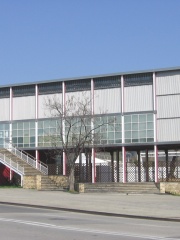
10. Josep Lluís Sert (1902 - 1983)
With an HPI of 62.46, Josep Lluís Sert is the 10th most famous Spanish Architect. His biography has been translated into 23 different languages.
Josep Lluís Sert i López (Catalan pronunciation: [ʒuˈzɛb ʎuˈis ˈsɛɾt]; 1 July 1902 – 15 March 1983) was a Catalan architect and city planner who lived and worked in the United States after 1939.
People
Pantheon has 21 people classified as Spanish architects born between 1339 and 1961. Of these 21, 3 (14.29%) of them are still alive today. The most famous living Spanish architects include Santiago Calatrava, Rafael Moneo, and Patricia Urquiola. The most famous deceased Spanish architects include Antoni Gaudí, Lluís Domènech i Montaner, and Ricardo Bofill.
Living Spanish Architects
Go to all RankingsSantiago Calatrava
1951 - Present
HPI: 74.12
Rafael Moneo
1937 - Present
HPI: 66.65
Patricia Urquiola
1961 - Present
HPI: 53.27
Deceased Spanish Architects
Go to all RankingsAntoni Gaudí
1852 - 1926
HPI: 86.92
Lluís Domènech i Montaner
1850 - 1923
HPI: 68.70
Ricardo Bofill
1939 - 2022
HPI: 66.83
Juan de Herrera
1530 - 1593
HPI: 65.50
Alonzo Cano
1601 - 1667
HPI: 64.67
Josep Puig i Cadafalch
1867 - 1956
HPI: 64.32
Muhammad V of Granada
1339 - 1391
HPI: 63.69
Josep Lluís Sert
1902 - 1983
HPI: 62.46
Félix Candela
1910 - 1997
HPI: 62.17
José Benito de Churriguera
1665 - 1725
HPI: 61.47
Josep Maria Jujol
1879 - 1949
HPI: 60.71
Juan Bautista de Toledo
1515 - 1567
HPI: 60.58
Overlapping Lives
Which Architects were alive at the same time? This visualization shows the lifespans of the 12 most globally memorable Architects since 1700.


